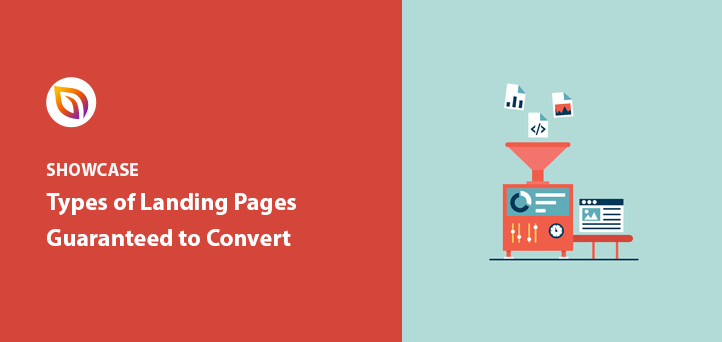Landing pages are the holy grail when it comes to lead generation.
They’re insanely useful for capturing email addresses, getting people to sign up for your newsletter, and increasing your site’s visibility. But there are so many different types of landing pages that it can be hard to know which ones you should be using.
In this article, we share several types of landing pages guaranteed to increase your site’s conversion rate.
But first…
What Are Landing Pages in a Website?
A landing page is a page that visitors arrive at on your website after clicking an ad. For example, search engine text ads, display ads, or ads from social media marketing campaigns.
Some marketers often direct the traffic from those ads to their homepage. But this can be a mistake that leads to lost leads and revenue.
When users click through to your homepage, there are lots of distractions that can lead them away from converting, like:
- Blog posts
- Social media links
- Third-party ads
Yet, a landing page is more focused and has none of the typical distractions. Instead, landing pages work by driving potential customers toward a specific goal like signing up to your email list or buying a product.
11 Types of Landing Pages Guaranteed to Increase Conversions
There are many different types of landing pages you can create with different goals and purposes. Knowing which landing page design to use for your digital marketing campaigns is tricky.
But don’t worry. Below we share the most common types of landing pages and when to use them for your business.
Video Guide
Keep reading if you prefer to read the written guide.
1. Squeeze Page
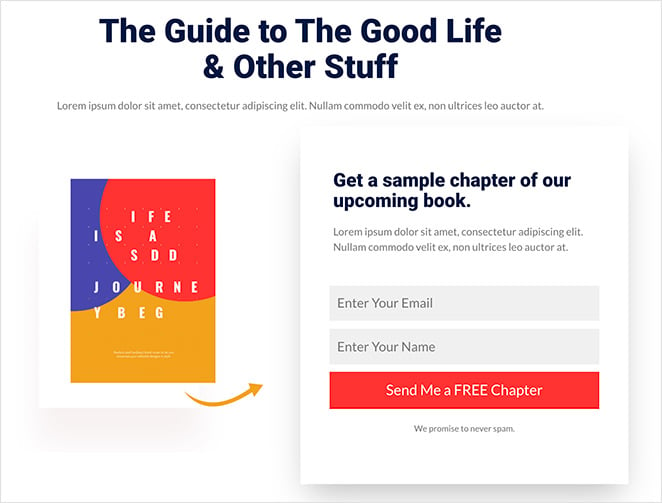
Squeeze pages are excellent landing pages for growing your email list because their focus is to collect email addresses from visitors. After capturing the address, you can nurture those visitors with relevant content and other offers.
The most popular squeeze pages offer an incentive for users to enter their contact information, like:
- Newsletters
- eBooks
- Whitepapers
- Free trial
By giving users something in return for handing over their email, you build trust and offer people value, which is great for building long-lasting customer relationships.
When putting your squeeze page together, keep your design simple and easy to use. Your CTA button (call-to-action) should be tempting enough for people to click and clear enough for mobile users to spot.
2. Splash Page
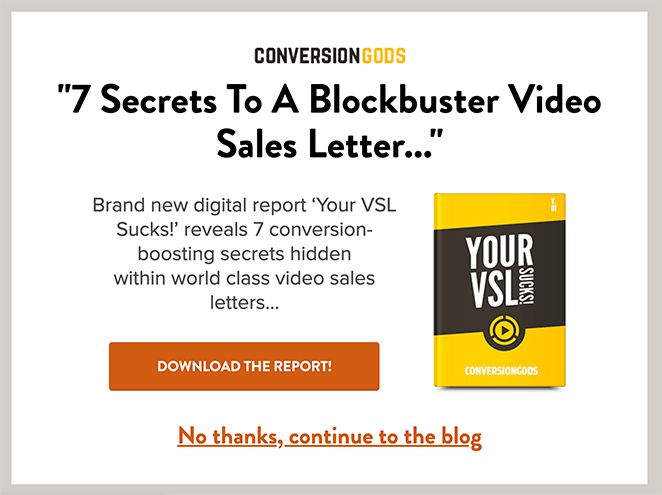
In contrast, a splash page isn’t always about capturing leads. You can use splash pages to offer more information to users before they head to the content you want them to see.
For example, when users click a social media link, you can show an intermediary page to verify their age before sending them to the link’s destination. Or your splash page might show an ad that you earn revenue from when people click the link.
Here are some other ways you can use splash pages:
- Promote your social media profiles
- Tell visitors your new website is coming soon
- Show a maintenance notice
- Ask users to set their language preferences
To put it simply, a splash welcomes users to your website with familiar branding and shows users an ad or message that benefits your business.
Learn the difference between a landing page and a splash page here.
3. Lead Capture Page
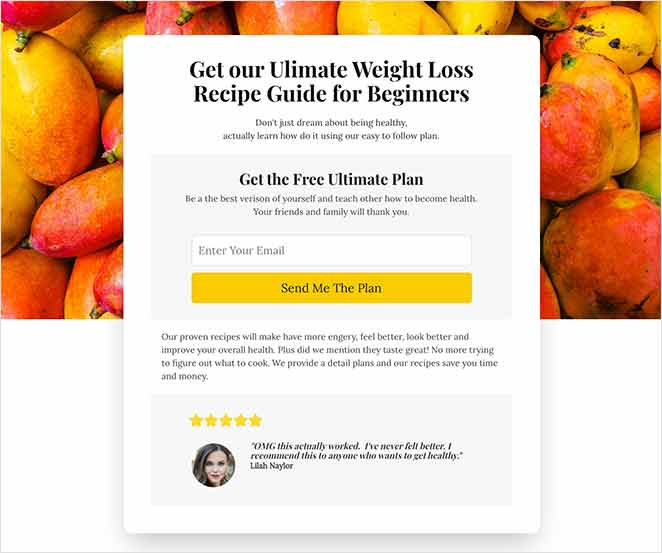
Lead capture pages are a lot like squeeze pages. But where they differ is instead of collecting only email addresses, they generally ask for more information from potential leads.
This type of landing page might ask for a lead’s:
- Name
- Business name
- Job title
- Phone number
- Industry
But the information you collect largely depends on your marketing goals and where that user is in your sales funnel.
For instance, if your lead capture page is at the top of your sales funnel, you don’t want to hit prospects with a form that asks for their life story. Instead, use a short form that asks for minimal information.
But if someone lands on your page after showing interest in your product or service, maybe they already downloaded a few case studies, it’s easier to ask for more information to qualify them as a lead.
4. Click-Through Landing Page
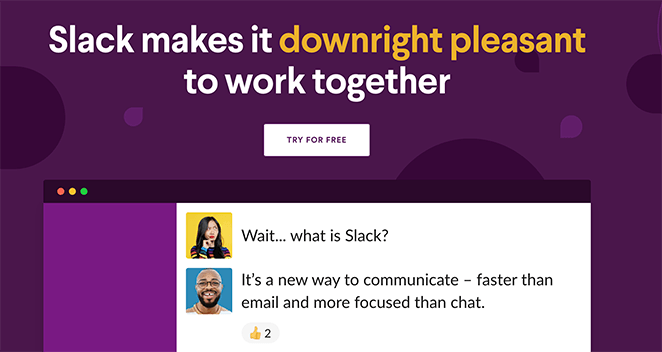
Before asking visitors for money, it’s important to offer them real value. You don’t want to hit people with a “buy now” button before they’re ready.
This is what a click-through landing page is – it offers value to your audience by sharing the benefits and features of your product or service without pushing them to purchase.
The CTA button on this type of landing page often takes users to a second landing page that provides pricing details or information on signing up for a free trial. When users land on that page, they’re fully educated on why they should move forward.
5. Long-Form Sales Landing Page
Sales pages are often longer than other types of landing pages. They’re used to answer all the questions potential customers might have about your business and address any objections they have for choosing you over your competitors.
By the time users scroll to the bottom of your page, they’ll know all the benefits they’ll get by making a purchase.
Take this sales page example from OptinMonster University.
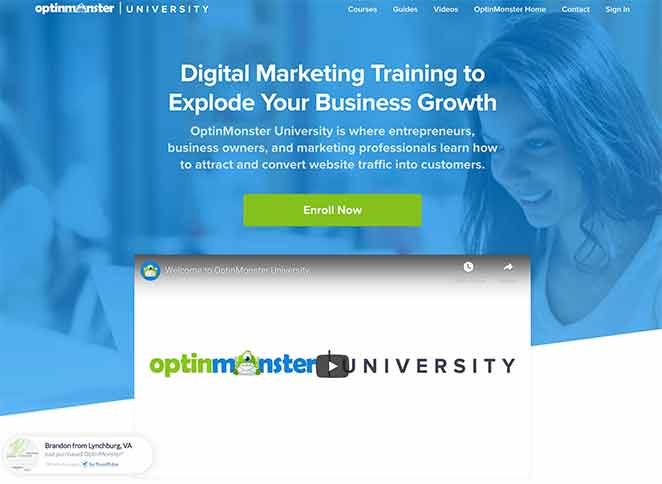
It starts with an eye-catching headline and a video explaining how their digital marketing training can help you grow your business. You then see logos of companies that trust OptinMonster, positioning them as credible experts in their industry.
Further down the page are quotes and testimonials which serve as powerful social proof. Then finally, is a CTA button to enroll for free, with a strike through the usual price to create urgency.
A sales landing page has plenty of detail without the minimalism of a squeeze page. This is because your goal for the page is to close business.
Click here to learn how to create a sales page in WordPress.
6. Coming Soon Landing Page
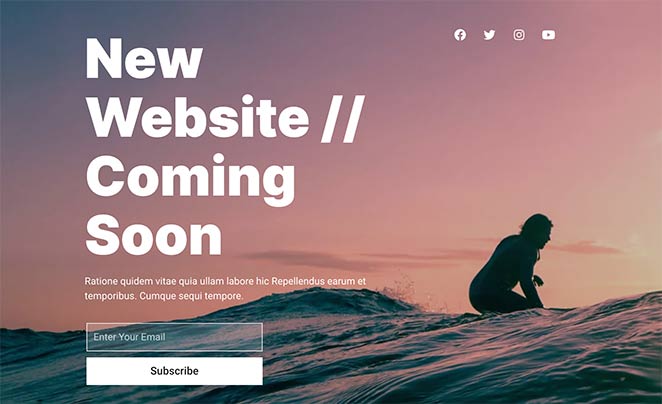
If you’re launching a new website or product but you’re not ready to reveal the full offer, a coming soon page is an excellent type of landing page to use. A coming soon page allows you to display a place-holder page on your site with a friendly notice saying you’re launching soon.
You can use a coming soon page to tease your new product, website, or offer. Ask visitors to sign up with their email address in exchange for an email notification when you go live.
Add a countdown timer to your coming soon page, counting down to launch day. You can even show your social media profile links to encourage users to follow you on social media.
You can learn how to create a coming soon page in WordPress here.
7. 404 Landing Page
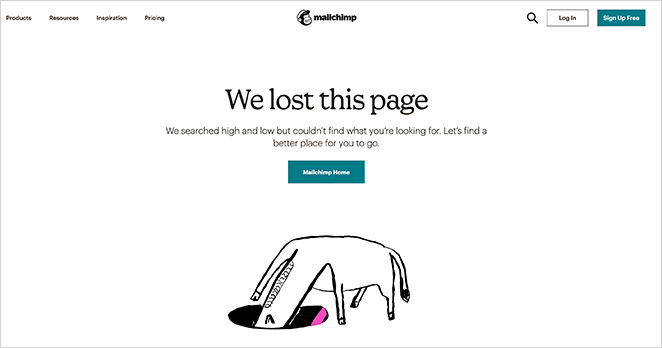
No one likes facing a 404 error, and your visitors will inevitably face them from time to time. But when they do, it’s important to make them as helpful as possible to keep people on your website.
Humor is an excellent way to offset the discomfort of the error, so get creative with your 404 page message and design. You should also offer ways for people to get back to your website by showing a link to your homepage or other pages.
Your 404 page doesn’t have just to sit there waiting either. Put it to work and use it as a lead generation tool. You could offer users a free demo, showcase featured products, or even send people to relevant articles.
8. Thank You Landing Page
A thank you page is an excellent way to thank users for joining your list, downloading a freebie, or buying a product. But too often, marketers don’t use this type of page for anything else.
Because the people that visit your thank you page are already motivated and interested in your brand, you can use this page to offer more value.
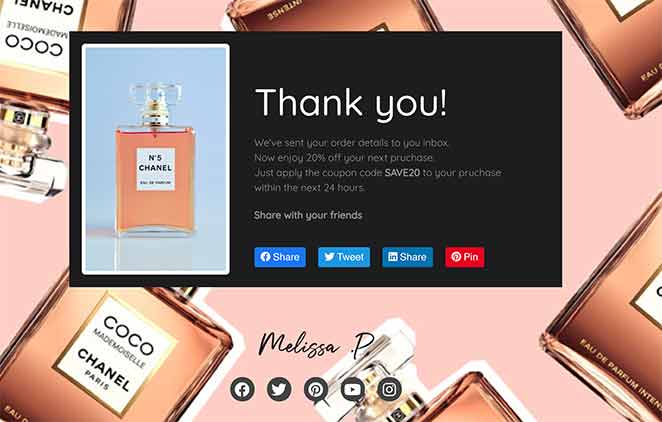
For example, you could invite users to:
- Enter a giveaway
- Browse recommended products
- Follow your social media profiles
- Refer other people to your business
- Leave a product review
You can even use a thank you page to provide an extra offer to users, based on their last action.
For instance, if users visit your thank you page after downloading an ebook about the best keto ingredients, you could offer them a free swipe file download of keto recipes. The only difference is you can ask for different information on your sign-up form this time to better craft the next offer you send their way.
9. Event Landing Page
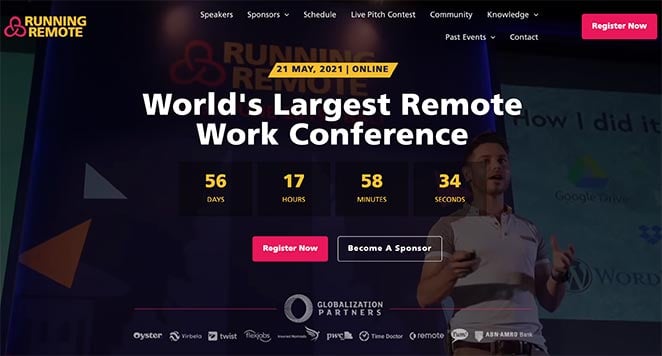
Similar to lead-capture pages, event landing pages are web pages that convert visitors into event attendees. Sometimes this type of landing is called an event registration landing page because the goal is to convince users to register for the event.
The type of event your landing page promotes could be a:
- Webinar
- Conference
- Seminar
- On-demand event
Every event landing page has several things in common. First, they include the event details, like the time, date, and location. They also include details about who is speaking at the event and event sponsors.
Above all, your event landing page should have a short registration form where users can register their interest and where you can collect leads.
10. Login Landing Page
A login page is another type of landing page that most internet users are familiar with. It’s a web page that requires users to enter a username or email address and a password to log into a website.
Many businesses have a simple login page that only includes a login form. But what you might not know is you can use this space to offer more value to users.
Take this example from WPForms.
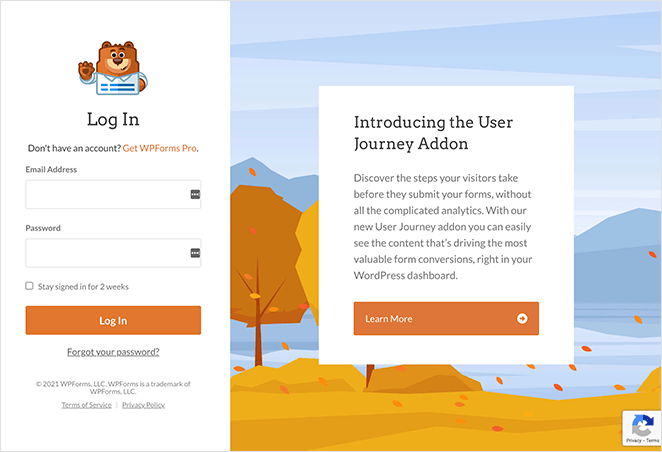
Next to the login form is an area introducing users to a new WPForms feature and a button to learn more. Since many people might not know about this update, it’s a great way to let them know in a place WPForms know they’ll visit.
Other ways to use valuable space on your login page include:
- Highlighting specific features
- Offering discounts for upgrades
- Promoting partner products
Just make sure your offer is relevant to your users.
11. Pricing Landing Page
Your pricing page should be the most heavily optimized page on your entire website. It’s here that people come to make decisions about whether they should buy your product or service.
Take this pricing page from SeedProd. It clearly outlines the 4 tiered packages, with links to more information or to get started.
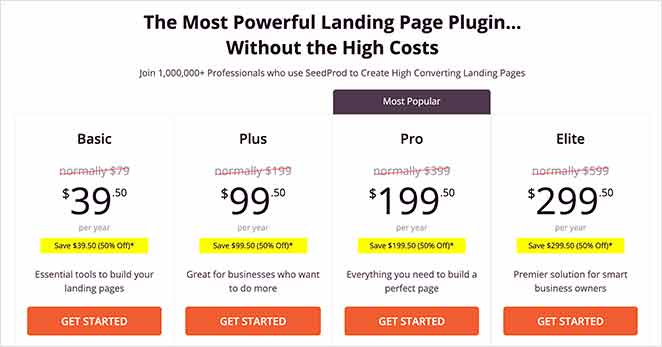
Directly after the pricing table is a money-back guarantee that reassures users with an unconditional refund if SeedProd isn’t the best fit. What we love about this pricing page are the 3 boxes right after the guarantee with testimonials from satisfied customers.
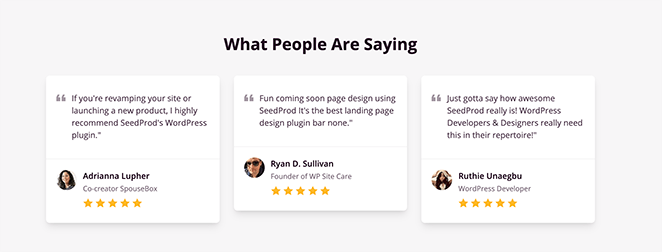
And towards the end of the page is a FAQ section addressing common questions before users even have to ask them. With all the above, users can have their fears and objections addressed and see the benefits of signing up.
That’s it!
We hope this article helped you learn about the different types of landing pages you can make for your business.
The next step is to dive in and make one yourself. To help, we put together this step-by-step guide on how to create a landing page in WordPress. You might also like to know what the best landing page conversion rates are.
While you’re here, please follow us on Facebook and Twitter for more helpful tips and tutorials.

